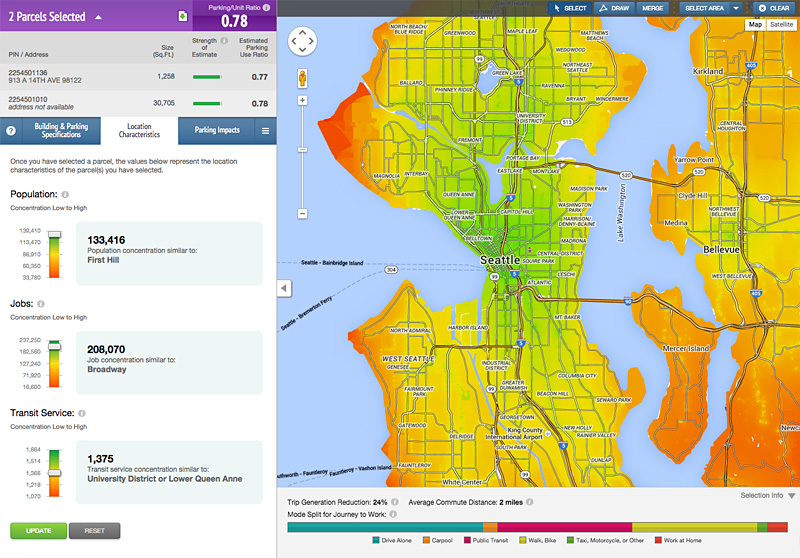Gasoline is at the lowest price it’s been in five years, currently hovering around $2.00/gallon. It captures everyone’s attention. And it lowers household costs, but not as much as one might think.
The cost of gas represents only about 25% of the cost of owning a car. The other costs, like insurance and maintenance – not to mention the cost of the car itself – don’t fluctuate when gas prices do. Even a 50% decrease in pump prices only reduces the cost of owning a car by about 12.5%. We’ve built a Total Driving Costs tool that gives a more complete picture of how much owning a car really costs.

These low gas prices can easily distract us from the fundamental fact that where you live determines how much you have to drive and how much gas you need to use. Walkable places with local amenities minimize our need to drive. And good regional transit reduces driving even more. In the long term, location-efficient places allow people to drive less and own fewer cars per household. This, of course, saves a boatload—or a carload—of money.
Maps and data consistently show that the higher the location efficiency, the lower the household transportation costs. Our Housing and Transportation (H+T®) Affordability Index maps the variation in household transportation costs for all cities and regions in the country.
Lower-income drivers are particularly sensitive to the transportation costs tied to where they live. When the poor have travel choice through access to public transit, they save a lot; conversely, when they are forced to live far from jobs, grocery stores, and transit, they are paying a hidden poverty tax. Nationally, transportation is the second highest consumer expenditure after housing. Ensuring that affordable housing is located near transit needs to be a top economic development priority.

Last year was a record year for transit growth – and for car sharing, an industry that barely existed a decade ago. It was also a record year for transportation referendums in which people actually voted to tax themselves to pay for expanded mass transit. Of the 34 transit expansion ballot initiatives in 2015, 24 (71%) were approved by the voters. City residents understand the value of transportation choice and, when given the chance, they will put their resources behind it.
Although it’s easy to be blinded by low gas prices, car ownership is a burden many households can’t bear, and shouldn’t have to. Affordable housing near transit and transit expansion both need to be at the top of the economic development agenda for the Chicago region.
REFERENCE
According to the Center for Transportation Excellence (CFTE), there were 34 measures in 10 states that saw 24 wins for a success rate of 71% in 2015. You can see more facts and figures in Measuring Up: Data and Maps, or see their tracker on their website.





 Strengthening Transit Through Community Partnerships
Strengthening Transit Through Community Partnerships